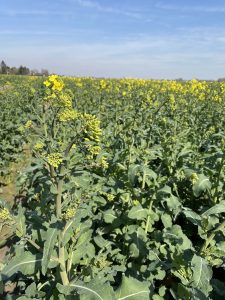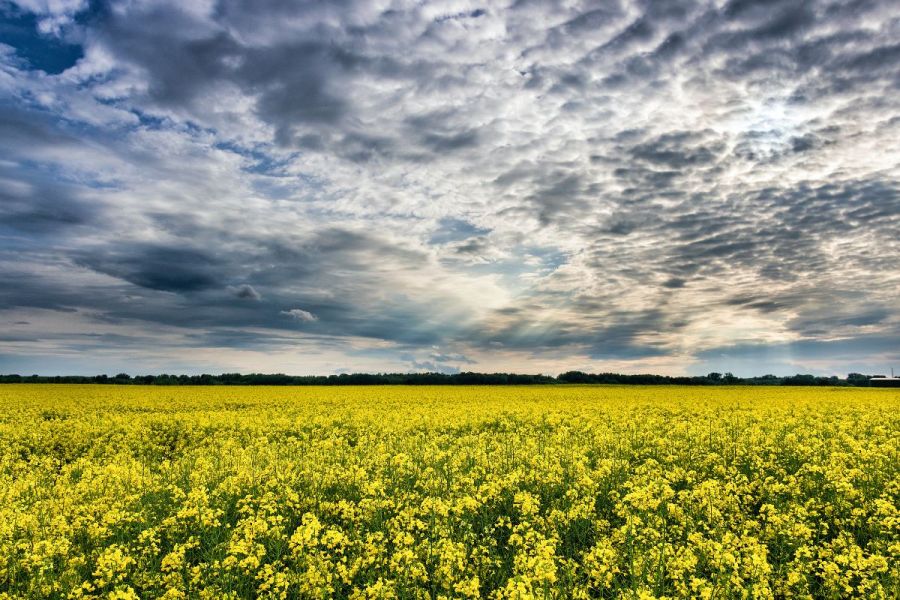Plant breeders are working behind the scenes to identify novel disease resistance mechanisms for future oilseed rape varieties. CPM finds out why these developments are required.
“Breeders have to stack many essential traits and deliver innovation quickly to support growers with what remains a valuable crop.”
By Janine Adamson
A plant breeder’s work is never done, particularly when it comes to finding solutions to new problems. With synthetic chemistry dwindling, and what remaining often being over-used, it’s hardly surprising that fungicide-resistant disease populations are on the rise.
Hopes are being pinned on plant breeding to deliver the goods from the seed up. And thankfully times are changing – the Genetic Technology (Precision Breeding) Act was recently passed into law, allowing farmers to grow crops that utilise precision breeding techniques, including gene editing (GE).
Despite this positive step, breeding couldn’t stop and wait for this change to happen, instead, working to develop a steady flow of innovative new varieties, some of which are nearing launch.
For oilseed rape growers already pestered by cabbage stem flea beetle, diseases such as clubroot and turnip yellows virus (TuYV) could prove another reason to avoid the crop. However, new varieties based on alternative resistance sources are soon to land with the potential to offer much greater control.

Breeding for clubroot resistance is complicated and time consuming which poses a challenge for plant breeders, says Alex Doring.
“Hybrid OSR varieties with genetic clubroot protection have played an important role in keeping the disease in check, while protecting yields for growers,” says DSV’s Dr Alex Doring. “These varieties currently include options such as DSV Crossfit CR and DSV Crocodile CR, however innovative new developments are on the horizon.”
Although cultivar resistance is present in most cruciferous crop species, the majority of resistance sources are race-specific. This is across relevant sources including Dutch/Flemish stubble turnips, swedes, fodder rape plus some cabbage and broccoli cultivars.
But for the commercial world, clubroot resistance in all OSR varieties has been developed from just one source – the Mendel gene. According to Alex, this resistance vulnerability is of increasing concern.
“In the right conditions, highly virulent races of clubroot can go from being at a very low level, to being the main race within just a few cultivation years. Because breeding for clubroot resistance is complicated and time consuming, this poses a challenge for plant breeders.
“However, DSV’s been undertaking research to introduce a new clubroot resistance mechanism called CRE1 (Clubroot Resistance Enhanced 1), which will offer broader protection against a wider range of clubroot pathotypes,” says Alex.
CRE1 is a novel trait that’s been created by crossing from the Brassica rapa species – a close relative of OSR. Laboratory infection studies using various clubroot isolates indicate CRE1 to be an enhanced resistance mechanism compared with the previous Mendel-derived resistance.
How this works is that CRE1 provides race-specific resistance but with an ‘extension’ – protection against substantially more races that are virulent on Mendel. This will potentially allow farmers to grow new CRE1 OSR varieties even at sites where clubroot pathotypes are able to infect the original Mendel-resistance.
DSV’s first CRE1 resistant variety is expected to obtain EU registration in winter 2023/24, with UK availability in two to three years. “This variety has the potential to achieve up to 90% control, but more importantly, we’re pre-empting by providing a solution before we have a huge problem,” says Alex.
He warns that although an exciting development, the importance of protecting such genetics can’t be ignored. For growers, this means following best practice such as optimising cropping rotations and ensuring adequate weed control.
The latter being important because clubroot has a range of common brassica hosts, such as shepherds purse and charlock, often cited as the reason why clubroot still occurs even after long breaks in the rotation.
The increase in use of cover crops also poses a threat, he says. “Brassicas such as radish, turnips and mustards have become popular cover crops because of their soil compaction-busting roots. They also grow very quickly and scavenge for nutrients,” says Alex.
“Even so, they shouldn’t be used in crop rotations with OSR as this can force clubroot strains to overcome resistance. Clubroot resistant oil radish cultivars also shouldn’t be used because they can promote the formation of novel strains, which could overcome resistant cultivars.”
Initial research has shown that some cover crops, such as peas, clovers and phacelia, could in fact help in the fight against clubroot. Similar to trap crops, they incite resting clubroot spores to germinate without the ability to reproduce, potentially helping to decrease the clubroot potential in soils. This would provide a multi-faceted solution for growers while enhancing the existing cultural control toolbox.
In the more immediate eyeline, growers can expect a new DSV clubroot variety within the next year. Mendel gene-based RAP637 CR is a variety that offers medium maturity, resistance to clubroot, TuYV resistance and holds up well against lodging.
In terms of TuYV, RAGT hopes a novel stacked source of resistance will help to establish a new generation of OSR varieties. HRG231, provisionally named RGT Ceos, was originally primed for the Northern European market, but following its unexpected success is now pitching for UK launch. The NL1 listed variety is currently with selected distributors as a preview ahead of official listing.

RAGT has identified new genetics for TuYV resistance that’ll result in a more robust generation of OSR, says Lee Bennett.
“RAGT has identified new genetics for TuYV resistance that’ll result in a more robust generation of OSR,” says RAGT’s Lee Bennett. “We breed a wide range of varieties at our research station in France that aim to address objectives beyond just the UK market.
“Having this broad pool to choose from means sometimes we come across something unexpected, which is what happened with HRG231. It’s a strong all-rounder that yields impressively on the continent and, as a result, RAGT’s making that variety and its sister line our absolute focus for combatting TuYV.”
According to Lee, spring growth bounce-back and overall resilience are essential requirements of an OSR varietal package to help plants to recover from autumn pest and frost damage. He cites OSR as his specialist crop, perhaps one reason why RAGT is committed to safeguarding its future through GE.

HRG231 was originally primed for the Northern European market, but following its unexpected success is now pitching for UK launch.
“Breeders have to stack many essential traits and deliver innovation quickly to support growers with what remains a valuable crop. Thankfully this is where science fills the gap. The move to enable plant breeders to use GE is far from insignificant and is something that RAGT will be exploring moving forward,” says Lee.
He explains that GE is essentially manipulation through precision to ensure that a product matches its aim. The company is now engaging with field trials of GE varieties, to explore its potential in OSR.
For the here and now, RGT Kanzzas is the latest winter OSR variety to emerge from RAGT’s pipeline. The variety’s a candidate for the East/West region, offering high biomass, early spring vigour and medium early maturity. It also features the best light leaf spot rating of all varieties in official National List trials, scoring an 8 for the disease and a 6 for stem canker.
Lee acknowledges a shift in approach for RAGT. “Growers need to assess their individual farm needs and select a variety based on that, rather than breeders attempting to force a variety to fit someone’s scenario. This means offering a diverse range of options that suit more specific situations, not a generic hit.
“RAGT can do this, because we have a broad array of material available to us. It’s early days of our new perspective, but we’re only a few years away from launching a suite of new varieties,” he says.
This article was taken from the latest issue of CPM. Read the article in full here.
For more articles like this, subscribe here.
Sign up for Crop Production Magazine’s FREE e-newsletter here.




